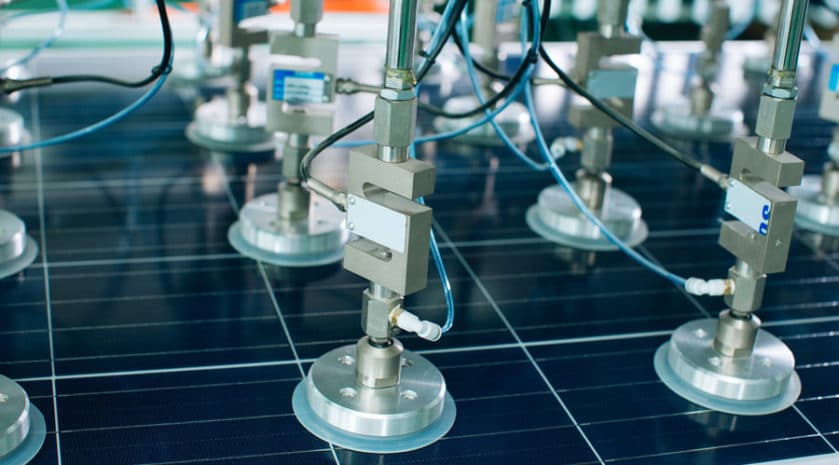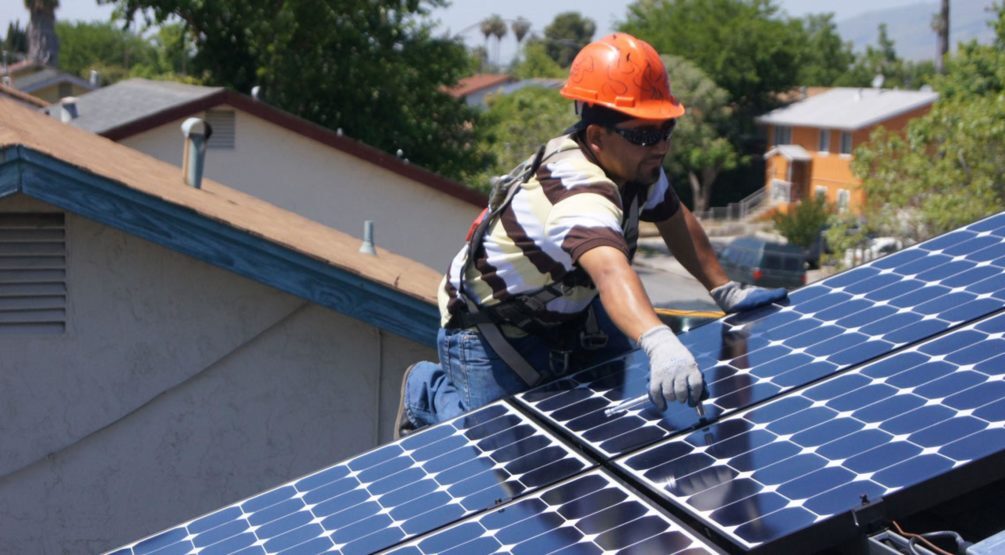In the wake of President Trump’s announcement of import duties on silicon solar cells and modules coming in to the U.S., analysts from various firms were united in declaring that this would not result in much new U.S. solar manufacturing.
They had a number of reasons for this. First, the tariffs were too low for the economics of making solar cells and modules in the United States to compete with imports. Second, there was no rationale for cell facilities, given that the massive 2.5 GW exemption each year for cell imports is far more than total demand from U.S. crystalline silicon module makers. But most importantly, these tariffs step down and end after four years. What company would invest millions in a factory to capture that brief an opportunity?
And yet, despite these sober predictions, there have been plans for nearly 3.6 GW of new U.S. module production capacity either announced or discovered by pv magazine staff over the past few months. (Editor’s note: This article was updated from the printed version to include manufacturing capacity totals that include Hanwha Q Cells’ plan for a new factory in Georgia, which was announced after the print article went to press.)
This includes at least five new factories – not to mention SunPower’s acquisition of SolarWorld Americas’ Oregon cell and module factory.
But before we jump to the conclusion that this is a direct result of the Section 201 solar tariffs, it is important to look more closely at the details of some of the larger deals.
Project Volt
Rumors preceding the first major factory announcement came after the U.S. International Trade Commission (ITC) found injury, but well before the final tariff announcement. As documented in a series of City Council filings, as early as December a mysterious Asian manufacturer was seeking $54 million in state and local incentives to build two factories and its U.S. headquarters in Jacksonville, Florida, under the code name “Project Volt.”
“Project Volt” ended up being none other than Jinko Solar, and it was later revealed that a primary driver for this factory was a 2.75 GW module supply deal that Jinko had signed with NextEra Energy, a major power company and one of the largest U.S. solar developers.
After the tariffs were announced, Jinko Solar massively downsized its plans for a U.S. manufacturing base. The new factory will still have the capacity to produce 400 MW of modules and employ 200 workers, however, this is only a quarter of the workforce originally planned. Investment levels likewise diminished, and now the company’s total investment in the new facility will be less than the incentives it sought a few months earlier.
While the details of Jinko Solar’s initial plans were unclear, it is likely that the company was planning for both cell and module production lines. However, the massive exemption for imported cells in President Trump’s final tariff decision eviscerated any rationale for companies to produce cells domestically.
SunPower and SolarWorld
In a surprise move in mid-April, SunPower announced an agreement to buy its erstwhile opponent in the Section 201 trade case, SolarWorld Americas, and its factory in Oregon. While this is not new manufacturing capacity per se, it does represent a rescue of SolarWorld and a major investment in U.S. manufacturing by a company that historically has almost exclusively made its products overseas.
SunPower has stated that it plans to make both its shingled P-Series modules and SolarWorld’s legacy products at the factory; but has revealed few other details. Meanwhile, SolarWorld Americas has made its own moves well before the close of the transaction, including lobbying for an exemption for SunPower’s products and replacing President and CEO Jürgen Stein with a restructuring expert.
First Solar in Ohio
But even the strange tidings of SolarWorld Americas’ acquisition was not the biggest manufacturing news to break. A week later First Solar announced that it will build a new factory in Ohio with the capacity to manufacture an enormous 1.2 GW of its large format “Series 6” cadmium telluride thin film PV modules annually.
This will represent a $400 million initial investment, and when complete in late 2019 will be the largest solar factory by capacity in the Western Hemisphere – larger even than the Tesla/Panasonic ‘gigafactory’ in upstate New York. The greenfield facility will join the 640 MW of annual capacity that First Solar has in Perrysburg, as well as multiple gigawatts of capacity in Malaysia and Vietnam.
Section 201 and causation
There are plans for other, smaller factories besides these three, including announcements by SolarTech Universal and Solaria. Additionally, pv magazine has received leaked information that Mission Solar plans to double its module capacity in Texas to 400 MW, though this had not been confirmed by the company at the time of writing.
Regarding the big three announcements, the Section 201 tariffs had a clear role in driving the first two. By building a U.S. factory, Jinko Solar will be able to supply a portion of the modules that it has pledged to NextEra tariff-free. However, it is notable that a factory with an annual output of 400 MW can in no way supply the full 2.75 GW. Even with NextEra hoarding modules in advance of the tariff announcement, Jinko Solar will still be supplying NextEra with some imported product, which will be subject to tariffs. (Editor’s note: Since the initial publication of this article, it has been revealed that Jinko will also be supplying the U.S. residential market with output from this factory)
For SunPower, the role of the Section 201 duties is also obvious. Given the higher cost per watt of SolarWorld’s premium products, these are among the products most affected by the ad valorem nature of the tariffs. SunPower CEO Tom Werner also notes the advantages of not trying to swim against the political current.
“We’ve been straightforward that our decision to acquire SolarWorld Americas was catalyzed by the Administration’s desire to have U.S. manufacturing,” Werner tells pv magazine. He notes that with the new factory, SolarWorld will have a third of its manufacturing in the United States, a higher portion than other companies. Werner has also been clear that without the tariffs, his company wouldn’t be buying SolarWorld.
But for First Solar’s Ohio facility, which represents the majority of new capacity announced to date, there is no direct line of causation. As the Section 201 tariffs apply only to crystalline silicon technology, they give an advantage to First Solar over its Asian competitors in the utility-scale solar space. However, this applies to First Solar’s products whether they are made in Malaysia, Vietnam, or Ohio, and as such should have no bearing on where the company opts to locate new manufacturing.
Dollars and sense
But the Section 201 duties are only one in a number of factors that must be considered. Supply chains, proximity to end-customers, construction costs, labor costs and available incentives are all important, and the calculus is different for each company and factory.
Labor, material, and construction costs are higher in the United States than in China or Southeast Asia. And while these factories are closer to end-customers in the U.S. market – which is important for all three of these companies – they are in many cases further from the manufacturer’s supply chains, which have increasingly been moving to Asia.
In discussions of the movement of manufacturing to developing nations, much has been made of the role of relatively high U.S. and European labor costs. However, it is important to note that this is a lesser factor in the relatively automated world of solar manufacturing.
For First Solar’s new factory, this may be even less of a factor. “We designed the factory to be capital efficient, but also labor efficient,” First Solar Chief Technology Officer (CTO) Raffi Garabedian tells pv magazine. “It’s a dramatic increase in labor productivity relative to Series 4, and that is a significant factor in our ability to build more in the United States.”
Local incentives
None of these three companies are receiving U.S. federal support, but both Jinko Solar and First Solar expect to receive state and/or local incentives. Jacksonville City Council has approved a $3.4 million package, and a matching $800,000 from the state of Florida will bump up total incentives to $4.2 million. This will cover around 8% of the cost of Jinko Solar’s initial investment.
First Solar says it is still negotiating state and local incentives for its factory in Ohio, and as such was not able to share details. CTO Garabedian says this is “nothing that makes the decision for you, but it’s something that supports the decision.”
This is not unusual for U.S. manufacturing. Unlike China and Malaysia, which offer substantial support at the national level for solar and other forms of high-tech manufacturing, in the United States individual states and cities often compete with each other to attract businesses, and this includes incentive packages for large employers. When Tesla located its solar “gigafactory” in Buffalo, New York, it not only received extensive subsidies, but did not even buy a factory. Instead the space is leased from a non-profit associated with the State University of New York.
Tax reform
This does not mean that U.S. federal policy did not have any effect. When the Republican Party was pushing its tax reform package including a dramatic cut in the corporate tax rate through Congress, pv magazine staff and many others were highly concerned with the potential impact of the Base Erosion Anti-abuse Tax (BEAT) provision. We may also have underestimated other effects.
First Solar, SunPower, and Jinko Solar have all stated that tax reform improved the economics of U.S. manufacturing. “Although tax reform was not a driving factor in our decision to be here, it does help the economics of the factory and makes the plan more attractive,” says Jinko Solar Investor Relations Director Sebastian Liu.
First Solar is more adamant. “I can pretty much 100% say that (the new Ohio factory) wouldn’t have happened without tax reform,” states Garabedian. “It’s not the reason that it happened. But taxes would have been a huge impediment otherwise.”
International examples support the importance of tax policy. First Solar notes that it receives “beneficial” tax treatment in Vietnam, and Malaysia has attracted a large volume of solar and other high-technology manufacturing due to its 10 year tax holiday for high-tech industries.
Minor renaissance
According to pv magazine’s calculations, the additional 3.6 GW that these factories represent will increase the nation’s current PV manufacturing capacity by at least two thirds, to more than 6 GW. However, even after this expansion, if every factory ran at 100% capacity and every module was shipped to domestic projects it would still meet only around 2/3 of the nation’s annual demand.
As such, it is important not to overstate this resurgence. The number of jobs here – less than 1,000 new positions – is a drop in the bucket compared to the potential impact of the Section 201 tariffs on the downstream market, which employs vastly more workers.
Furthermore, the significance of tax reform in making these investments possible underscores what we have long argued at pv magazine. Punitive measures alone will not rebuild U.S. manufacturing, and instead substantial concrete support is needed. In this case, the effects of tax reform are far more wide-reaching than solar, and as such they represent both an indirect and likely an accidental boost to the U.S. cell and module sector.
At the end of the day the U.S still has no comprehensive plan to bring back solar production, or any other form of manufacturing; and is competing with nations that do. As such, this minor renaissance may not last long.
This content is protected by copyright and may not be reused. If you want to cooperate with us and would like to reuse some of our content, please contact: editors@pv-magazine.com.



I will Be there S.F. show